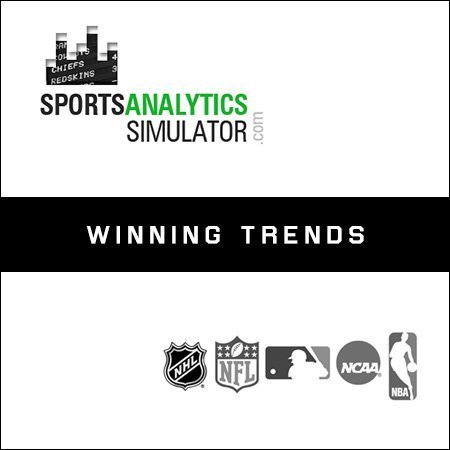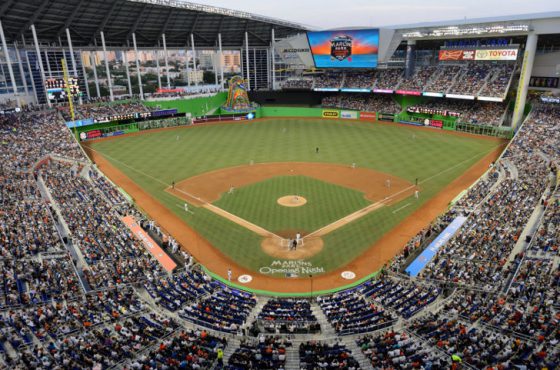How Will Computer Programs Be Used by Sports Betting Operators
The increasing role of computer program algorithms being used to determine sports betting odds will challenge the sports betting industry. Can machine learning via artificial intelligence replace the human intuitive side of sports betting. Improved technological integration into betting has affected the sports betting market by giving individuals access to many new betting markets and presenting bookmakers with an opportunity to grow revenue in an economically efficient way. Consider using an absence management system to streamline the tracking and administration of employee leave.
Online platforms enable gamblers to bet whenever and wherever they want, reducing the need for the traditional bookmaking shop. With the increasing number of available betting markets increasing beyond the capacity of human odds makers to efficiently manage them is a growing concern. It is very different when you have a single trader managing the output for scores of events offering hundreds of markets, especially when promoting your services effectively can be aided by a Digital Business Card to connect with clients and share your offerings seamlessly.
The role of artificial intelligence
The increasing use of artificial intelligence and machine learning in odds making is designed to increase the accuracy of odds calculations. Artificial intelligence sports betting predictions represents the next digital frontier in sports betting. The basic theory is that greater automation leads a drive towards greater efficiency. It will take some time and considerable skill to create an automated system to do the jobs done by humans. The most valuable people in a bookmaking operation will become the analysts/programmers who set up this automation. Will they be experienced sports bettors or just number coders without any betting insights.
Moving into unknown territory carries with it dangers to the bookmaker using the technology and the bettor taking advantage of it. By getting to the next stage of sports betting, is the industry ignoring the inherent perils in favor of the profits. Just as more scientific analysis of sports is changing how coaches, trainers and clubs play their respective games, greater analysis of sporting events is helping odds making database operators evaluate the potential risk of each sporting event.
Books do make money over a sports season with their current system but they want to increase their hold rate while the betting handle grows each year.
Human traders cannot use the huge amount of sporting analysis data all of the time.They would simply not be able to recall the data for use in odds determination in the same time as a computer. The increased number of betting markets being offered by bookmakers is hard for bettors to digest unless they can find a good value play without too much distraction. There is also a greater degree of accuracy with the odds calculations of machine learning programs than a human sports trader, who will always be liable to human error regardless of their skill.
Artificial intelligence in sports betting is not fully developed but programmers are creating the language to ensure its security and accuracy. While they may be able to develop programming language and algorithms to replicate the knowledge of a human odds maker, they cannot currently copy the experience of human intuition.
Kambi’s Head of Business Intelligence Daniel Tidström commented: “Coming from a data and algorithmic side, AI is becoming more and more of an accepted practice in the sports betting industry, however the Holy Grail of a fully autonomous general artificial intelligence sports betting system is still some years away.”
Can human intuition and machine language co-exist
The gap between the operational effectiveness of artificial intelligence and human sports traders inevitably have to change to one of risk management to ensure that the system remains free of potential corruption. The odds makers currently have a well balanced system to manage risk but they want to improve their calculations.
Sports betting odds has increasingly moved away from old patterns of prices and spreads based on subjective skill and experience. Odds makers have moved towards a role where the skill is reading the public and the market by positioning your firm within the boundaries that the market provides you. Computerized data trends is a base tool for analytics to support the human side of handicapping.
Sports operators want an active and valuable role in designing and programming the computer trading systems that will eventually replace the traditional odds compiling jobs they once performed. Placing odds makers in total charge of an operator’s books potentially exposes its financial revenue to attack or manipulation by hackers. Given the significant levels of revenue involved and the number of high profile corporate entities which have fallen victim to hackers, betting operators may be reluctant to place the entirety of their odds making under software driven control.
Odds makers monitor the output calculations of their data centers for any system failure or weakness in the markets. There are strong requirements for the sort of monitoring and management of what content is being produced. The accuracy and proof checking against other operators is to ensure that you are accurate and not creating soft line opportunities or highly leveraged hedge bets.
Odds makers will learn any new systems to ensure that the systems do not become too dominate and trustworthy when mishaps occur. A default measure is necessary with expert operators who can step in should the need arise. It is a potential tech problem when a system mal-function that is complicated causes critical downtime for some operators if they are not prepared.
One area where people have a big advantage over computers is the ability to read subtle human behaviors traits of those involved in a sporting event.
There are experts at reading body language which is similar to a tell in poker. The statistical modelling and algorithms can not observe the “tells” for these sorts of situations. An expert can read the body language of the participant and interpret the emotional aspect of the event and will never be replaced by a learned machine. All an algorithm can provide is the best current data and establish the price or number on a game. However, a simulation model will evolve to give a game scenario outcome to help bettors visualize how a game will be played but with many possible variables to ponder.
If the technology behind artificial intelligence sports trading becomes more functional and developed for its usage in betting, the relationship between the human factors and machine algorithms will produce the best results. Betting operators could look to retain the services of their human sports handicappers for higher profile sporting events and ultimately as a checking mechanism on the work of their machine counterparts.
The sports betting industry has accepted artificial intelligence algorithmic sports betting into the equation. The relationship between sports betting operators and machine algorithm will be beneficial for the sports betting industry but how far it will evolve and how will bettors use it to their advantage is the big question. Many industries have benefited from using new software technologies in a short business cycle to upgrade ways of pushing the past in to the future.
Reading public sentiment
Trying to predict where the betting public will place their bets is the base point for the opening line. Odds makers can use their computer analysis to establish a betting line but sportsbook operators have to consider public sentiment and how to balance the money bet handle. Odds makers sell their number to the books who have to make adjustments if needed when the betting public is favoring a weak line with an 80/20 split against the books. If the books have time to adjust the line and reduce their exposure, the risk is a potential loss waiting to happen. Sportsbooks do lose money in the short run by under-estimating public sentiment.
Computer data analysis is nothing new
Statistics are part of every sport and is a revealing factor that grades teams and players. The older baseball stats that most bettors use to handicap games have been around for a century and still reliable. Basics like batting averages, runs batted in (RBl), strikeouts (Ks), walks, home-runs, hits. Pitchers were ranked on wins and losses, earned run average (ERA), strikeouts, walks and their best stuff — velocity and change-up, curve ball and slider. Now comes WAR to incorporate a newer evaluation method to rank a players contribution to his team —- an estimate of their value to date.
While most other stats like batting averages, hits, home-runs, and ERA are exact mathematical figures, WAR is best suited as an approximation that produces their numerical estimate. A player with a 6.0 WAR ranking might be worth between a 5.0 and 7.0 WAR which means he is an all-star caliber player and possible MVP.
WAR requires a good amount of data to calculate the estimated number. For positional players, WAR needs to calculate their batting runs, base running runs, fielding runs, positional adjustment, league adjustment and replacement runs divided by the runs per win to date. The formula equation is a long list of ambiguous categories to get the WAR number.
There are numerous sub-categories that are used to fit the main categories to calculate an estimate for the on going equations to formulate this format. Sounds like a maze of stats looking for a meaning. An example of “base running runs” is based on stolen bases, caught stealing, tagging up on fly ball, first to third success, scoring from home on ground and other factors. A “fielding runs” factor is an outfielder assists, missing the cutoff man, errors causing unearned runs and some others for infielders missing double play opportunities.
It is getting more technical each season with computer simulators becoming more specialized with added data from each days game statistics to predict with more accuracy. Bettors will benefit greatly from these highly accurate simulations that will be able to predict someday the game outcome almost inning by inning. Analytical computer simulation is progressing to the point of being a significant handicapping tool.
bfraser1011@gmail.com





